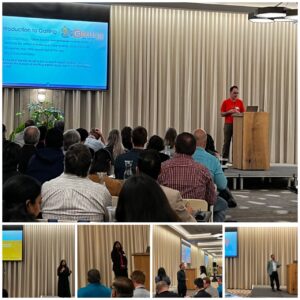Recently, I had the honour of speaking at the Test Automation & Digital QA Summit (TAS23) in Toronto, a renowned global event attracting the brightest minds in software testing, test automation, and digital quality assurance. This summit is an invaluable gathering for Quality Assurance (QA) enthusiasts, which is hosted annually across twelve countries worldwide.
My talk, titled “Testing and Automation of Web Applications”, delved into the fascinating world of web browser automation testing. Over the years, this realm has seen significant evolution, triggered by innovative browser engines and cutting-edge tools. A focal point of my presentation was on how reliable cross-browser testing has become indispensable in today’s QA workflows, playing a crucial role in many projects. The power of integrating such testing within continuous integration pipelines cannot be overstated—it leads to superior quality products, faster release cycles, and an enhanced developer experience.
One of the principal takeaways from the talk was understanding the practical experiences and challenges that come with automating web applications. This process involves managing the complexity of supporting a diverse range of web browsers and grappling with different authentication flows, among other things. I highlighted how tools like Playwright are transforming the landscape of web automation tooling and shared in-depth examples of their optimal configuration.
This talk was designed to be a comprehensive introduction to the topic, loaded with practical examples to help attendees understand how they can implement similar automation strategies in their projects. A key objective was to help the audience recognize that with the right tools and strategies, web application automation can help achieve substantial improvements in product quality and operational efficiency.
Remember, the world of testing and automation is ever-evolving!


